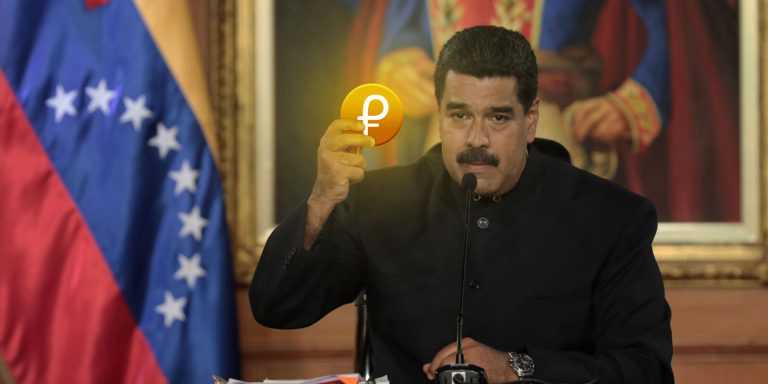In the last few years, Venezuela has been in the international headlines for all the wrong reasons. The South American country, once the richest of the region, is beset by continuous violence, economic mismanagement and political turbulence. After the death of strongman Hugo Chavez in 2013, the reigns were handed to current president Nicolás Maduro, who has seen his government’s popularity fall to extremely low levels. Inflation is expected to reach 18,000% in 2018, while the national currency, the Bolivar, was devalued by 99.6% in February alone.
Despite the chaos, Venezuela remains a country extremely rich in natural resources. It is an OPEC member, the world’s 11th largest oil producer and the 4th largest natural gas producer in South America. It is also rich in gold, bauxite, iron ore, and hydroelectric power. And it is this wealth that the government now seeks to harness and combine with the latest technology – Blockchain.

In December 2017 the Venezuelan government announced the introduction of the Petro, a cryptocurrency backed by the country’s oil and mineral reserves. It is non-mineable currency, with all tokens in circulation to be created by the government.
The main purpose of the Petro is to:
- Stem the fall in value of the Bolivar
- Access new forms of government financing through international asset sales
- Circumventing U.S.-imposed economic sanctions
The reaction of the business and political communities has been variegated. On the one hand, the U.S. government sees this as a potential threat to its economic dominance and capacity of putting a stranglehold on the economies of unfriendly regimes. On the other, many other countries are seeing it as a pioneering example of technology at the service of policy. Many other countries, including Russia, Estonia, and Sweden, are already developing or considering developing national cryptocurrencies. The Petro is however the only one to date not to just be anchored to the economic value of real commodities.
In the investment community, the pre-sale of Petro tokens has been a success. The Venezuelan government claimed that the project raised $735 million on the first day. A total of 38.4 MLN tokens will be sold through a pre-sale running until March 19th, at the reference price of $60. A further 44 MLN will be sold starting on March 20th. As of March 2nd, the Petro has raised $3 BLN from 171,015 certified purchases, from investors in 127 countries. President Maduro has announced that 100 million Petros in total will be made available, at a value of more than $6 billion.
The Petro is already accepted for buying airline tickets and fuel. President Maduro has also ordered several state-owned companies, including an oil/gas producers and gold miners, to start using the Petro for a part of future sales.
Advantages and disadvantages of the Petro
In theoretical terms, an asset-backed crypto would by nature be less volatile than a classic one like Bitcoin. That is because natural resource prices are by nature less volatile. Furthermore, if it were to become widely used, it could provide a new source of income in international trade priced in Petros.

On the negative side, critics say that it is not clear how the Petro can be classified as a cryptocurrency. There are no mining algorithms or Proofs of Work, leaving all currency creation and administration to centralised government agencies. Lack of central control and are however the hallmarks of Bitcoin and cryptocurrencies in general. Each Petro is in theory backed by a barrel of oil from Ayacucho Block of the Orinoco Oil Belt. However, there is now information on how this backing is legally enforced and who has the responsibility to do this.
A further issue is to that of credibility. Investors may see Venezuela, with its corruption and lack of transparency, as an unreliable originator of a unit of payment-based trust. Sudden legislative or political changes may affect the Petro, leading to a loss in investor confidence.
It is too early to determine the success of the Petro, despite the strong interest of the investment community. Nevertheless, its existence by itself could inaugurate a new breed of digital currencies which share government sponsorship with natural asset backing. This would be especially of interest to developing countries in Africa and Asia, often rich in natural resources but lacking the financial infrastructure and political stability to attract international investments.

